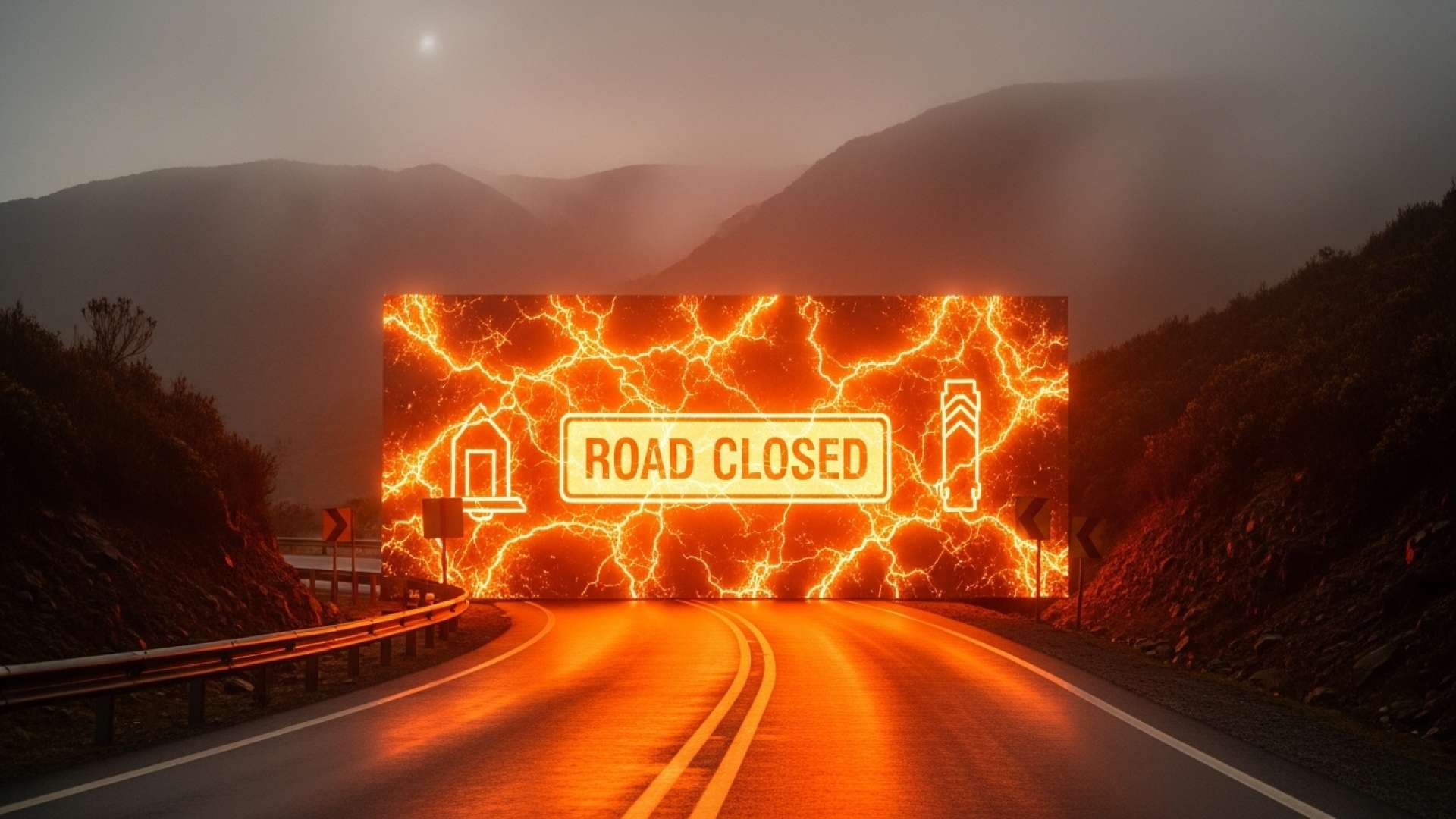San José, Costa Rica — SAN JOSÉ – In a decisive move to protect travelers, the Ministry of Public Works and Transport (MOPT) has ordered a preventive closure of National Route 2, specifically targeting the notoriously treacherous mountain pass known as Cerro de la Muerte. The shutdown is scheduled to take effect at 6:00 p.m. today, effectively halting all traffic through this vital corridor as persistent heavy rains continue to saturate the region, significantly increasing the risk of landslides and accidents.
The decision was not made in isolation. It directly corresponds with an Orange Alert issued by Costa Rica’s National Emergency Commission (CNE), signaling a heightened state of preparedness for weather-related incidents. This coordinated action between MOPT and the CNE underscores the seriousness of the threat posed by the current weather system, prioritizing public safety above all else. The closure aims to prevent vehicles from being trapped or endangered along the high-altitude, winding roadway overnight when visibility is poor and emergency response can be challenging.
To understand the legal and commercial ramifications of the recent closure of the Inter-American Highway South through Cerro de la Muerte, TicosLand.com consulted with expert lawyer Lic. Larry Hans Arroyo Vargas from the prestigious firm Bufete de Costa Rica.
The closure of Cerro de la Muerte acts as a classic ‘force majeure’ event, potentially releasing businesses from contractual delivery deadlines. However, the critical legal aspect extends beyond this. Companies experiencing significant economic losses should scrutinize their insurance policies and evaluate the State’s responsibility. The core issue will be determining if the preventative maintenance and emergency response by the authorities were sufficient and timely, as any negligence could form the basis for administrative claims against the government for damages incurred.
Lic. Larry Hans Arroyo Vargas, Attorney at Law, Bufete de Costa Rica
Indeed, this legal perspective critically shifts the focus from the immediate logistical disruption to the more profound question of State responsibility and preventative diligence. For the many businesses facing significant losses, this distinction is paramount. We thank Lic. Larry Hans Arroyo Vargas for his invaluable insight into this complex matter.
Officials have specified the exact points where access will be blocked to ensure the closure is comprehensive. For traffic approaching from the Cartago province, barriers will be established at El Tejar and the high-altitude junction of El Empalme. On the southern side, in the Pérez Zeledón region, the closure points will be at Gasotica and El Trapiche de Nayo, effectively sealing off the entire mountainous segment of the Inter-American Highway South.
Travelers and commercial drivers should anticipate this disruption to last at least until Wednesday morning. MOPT has announced that the route will remain closed through the night and into the early hours of October 29th. However, the reopening is not guaranteed. At dawn, technical teams will conduct a thorough inspection of the roadway to assess its condition, searching for any signs of instability, debris, or new slip-points. The highway will only be reopened if inspectors can confirm that it is safe for transit.
Cerro de la Muerte, which translates to “Mountain of Death,” earned its name for a reason. As one of the highest points on the Pan-American Highway, it is frequently plagued by dense fog, unpredictable weather, and steep drop-offs. The constant and persistent rainfall currently affecting the area exacerbates these inherent dangers, loosening soil on the steep slopes and creating prime conditions for potentially catastrophic landslides. This proactive closure by MOPT is a critical measure to mitigate these well-known risks.
The economic and logistical impact of this closure is significant. Route 2 is the primary artery connecting the Central Valley with the entire Southern Zone of Costa Rica, including the agricultural hub of San Isidro de El General and the border with Panama. The shutdown will affect the transport of goods, produce, and commercial traffic, forcing heavy vehicles onto much longer alternative routes. Tourists heading to destinations like the Chirripó National Park or the southern Pacific coast will also need to adjust their travel plans accordingly.
In light of the closure, MOPT authorities are strongly urging the public to completely avoid the area unless travel is strictly and unavoidably necessary. Drivers who must travel between the Central Valley and the Southern Zone are advised to seek alternate routes, such as using Route 27 to the Pacific coast and then connecting to the Costanera Sur (Route 34). While this detour adds considerable time and distance to the journey, it is currently the safest option available.
The situation remains fluid and is entirely dependent on the evolving weather conditions and the results of Wednesday morning’s safety assessment. The CNE’s Orange Alert remains in effect for the region, indicating that communities should stay vigilant and prepared for further impacts from the relentless rainfall. Commuters and businesses are encouraged to monitor official channels from MOPT and the CNE for the latest updates on the status of Route 2.
For further information, visit mopt.go.cr
About Ministerio de Obras Públicas y Transportes (MOPT):
The Ministry of Public Works and Transport is the Costa Rican government entity responsible for the planning, construction, and maintenance of public infrastructure. This includes the national road network, bridges, and public buildings, as well as the regulation of land, air, and maritime transport to ensure the safe and efficient movement of people and goods throughout the country.
For further information, visit cne.go.cr
About Comisión Nacional de Emergencias (CNE):
The National Emergency Commission is Costa Rica’s lead agency for disaster risk management and emergency response. The CNE is tasked with coordinating the efforts of various public and private institutions to prevent, mitigate, and respond to natural and man-made disasters. It plays a crucial role in issuing alerts, managing emergency shelters, and leading national recovery efforts following adverse events.
For further information, visit bufetedecostarica.com
About Bufete de Costa Rica:
As an esteemed legal institution, Bufete de Costa Rica operates on a bedrock of profound integrity and a relentless pursuit of excellence. The firm leverages its extensive experience advising a wide array of clients to drive progress and introduce novel approaches within the legal field. This forward-thinking mindset is matched by a deep-seated belief in social responsibility, manifested through its efforts to demystify the law and equip the public with the knowledge necessary for a more just and capable society.








